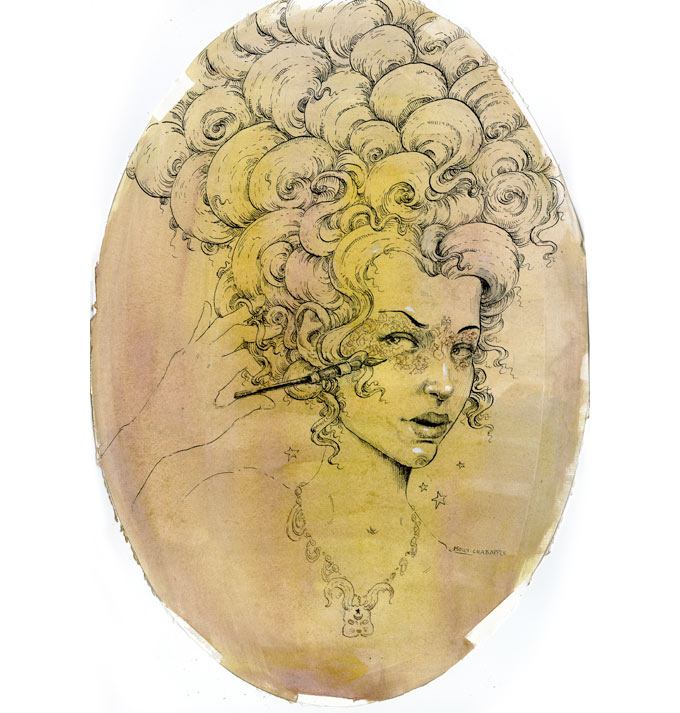
Portrait of Stoya by Molly Crabapple. On December 11, 2013, Creative Time Reports and Rhizome will present Glass Gaze, a performance in which artist Molly Crabapple, wearing Google Glass, will create life-drawings of Stoya, porn star and advocate for fair labor practices in the pornography industry, as she strikes a variety of poses. The one-time performance will be streamed live on the Rhizome website on Wednesday, December 11 from 3:00pm to 3:30pm. In early 2014, Creative Time Reports and Rhizome will co-publish the video along with an essay that Crabapple will write about the project.
Looking means taking. The gaze, whether the stereotypical male gaze or the gaze of an artist, is rapacious and objectifying. But technologies like Google Glass add a new layer to looking. Now, the gaze itself can be commodified, quantified, and sold—whether to advertisers or the NSA. Google Glass lets your audience, or the government, see the world from your perspective.
A classic act of looking is that of the artist staring at a model. In Glass Gaze, I will draw porn performer and aerialist Stoya while wearing a Google Glass that has been hacked by journalist Tim Pool, enabling it to live stream. Viewers will see art-making directly through my eyes.
The choice of Stoya as a model is an homage to Degas’s drawings of dancers. Degas is an archetypical artist of the male gaze. In the 21st century, the subjects of his drawings have been stripped of context, but in 19th-century Paris, many dancers doubled as sex workers and mistresses. His ballerinas were iron-tough athletes, working-class women hustling to survive and finance their art. As an artist, I love Degas’s dancers, but not his misogyny and alienation. Glass Gaze attempts to see what the gaze sees when the artist is not other, although the gaze itself is commodified and captured by an intermediary.
Artist: Molly Crabapple. Model: Stoya. Tech: Tim Pool.

